Nuts have been a staple in the human diet for centuries, providing not only a delicious crunch but also a powerhouse of nutrients. From almonds to walnuts, pistachios to cashews, the world of nuts is diverse and exciting. In this comprehensive guide, we will delve into the health benefits, culinary uses, and nutritional value of nuts, exploring why these tiny treasures are an essential addition to your diet. Health Benefits of Nuts Nuts are packed with nutrients that are beneficial for overall health. They are an excellent source of healthy fats, including monounsaturated and polyunsaturated fats, which help reduce the risk of heart disease. The combination of fiber, protein, and healthy fats in nuts also helps to keep you feeling full and satisfied, making them a great snack option for weight management. Furthermore, nuts are rich in vitamins and minerals, such as vitamin E, magnesium, and potassium. These nutrients play a vital role in supporting various bodily functions, including maintaining healthy skin, muscles, and nerves. Nuts also contain antioxidants, such as flavonoids and resveratrol, which help protect the body from oxidative stress and reduce inflammation.
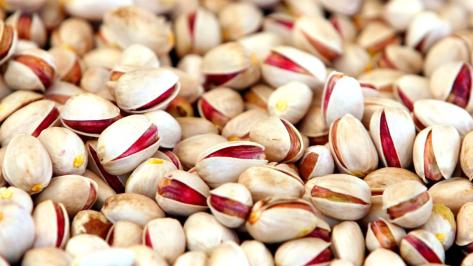
.
 Studies have shown that incorporating nuts into your diet may lower cholesterol levels, reduce the risk of developing type 2 diabetes, and improve overall heart health. In fact, the American Heart Association recommends eating a handful of nuts several times a week as part of a heart-healthy diet. Culinary Uses of Nuts Nuts are incredibly versatile and can be used in a wide range of culinary creations. From salads to stir-fries, baked goods to nut butters, the possibilities are endless. Different types of nuts have distinct flavors and textures, allowing you to experiment and add a unique twist to your dishes. Almonds, for example, are a popular choice for baking due to their mild, slightly sweet flavor. They can be ground into flour for gluten-free recipes or used as a topping for salads and oatmeal. Walnuts, with their earthy taste and crunchy texture, are perfect for adding a nutty crunch to salads, pasta dishes, and desserts. Pistachios are commonly used in Middle Eastern cuisine, adding a pop of color and flavor to dishes like baklava and pilafs. Cashews, known for their creamy texture, are a staple in vegan cooking, used to make dairy-free cheeses, sauces, and desserts. Nuts can also be transformed into delicious spreads, such as almond butter, peanut butter, and hazelnut spread. These nut butters can be enjoyed on toast, added to smoothies, or used as a dip for fruits and vegetables. Nutritional Value of Nuts In addition to their health benefits and culinary uses, nuts are nutrient powerhouses, providing a wide array of vitamins, minerals, and antioxidants. Here is a breakdown of the nutritional value of some common nuts: Almonds: Almonds are a great source of vitamin E, magnesium, and calcium. They also contain significant amounts of protein and fiber, making them a filling and nutritious snack. Walnuts: Walnuts are rich in omega-3 fatty acids, which are crucial for brain health and reducing inflammation. They also provide antioxidants like vitamin E and polyphenols, which help protect cells from damage.
Studies have shown that incorporating nuts into your diet may lower cholesterol levels, reduce the risk of developing type 2 diabetes, and improve overall heart health. In fact, the American Heart Association recommends eating a handful of nuts several times a week as part of a heart-healthy diet. Culinary Uses of Nuts Nuts are incredibly versatile and can be used in a wide range of culinary creations. From salads to stir-fries, baked goods to nut butters, the possibilities are endless. Different types of nuts have distinct flavors and textures, allowing you to experiment and add a unique twist to your dishes. Almonds, for example, are a popular choice for baking due to their mild, slightly sweet flavor. They can be ground into flour for gluten-free recipes or used as a topping for salads and oatmeal. Walnuts, with their earthy taste and crunchy texture, are perfect for adding a nutty crunch to salads, pasta dishes, and desserts. Pistachios are commonly used in Middle Eastern cuisine, adding a pop of color and flavor to dishes like baklava and pilafs. Cashews, known for their creamy texture, are a staple in vegan cooking, used to make dairy-free cheeses, sauces, and desserts. Nuts can also be transformed into delicious spreads, such as almond butter, peanut butter, and hazelnut spread. These nut butters can be enjoyed on toast, added to smoothies, or used as a dip for fruits and vegetables. Nutritional Value of Nuts In addition to their health benefits and culinary uses, nuts are nutrient powerhouses, providing a wide array of vitamins, minerals, and antioxidants. Here is a breakdown of the nutritional value of some common nuts: Almonds: Almonds are a great source of vitamin E, magnesium, and calcium. They also contain significant amounts of protein and fiber, making them a filling and nutritious snack. Walnuts: Walnuts are rich in omega-3 fatty acids, which are crucial for brain health and reducing inflammation. They also provide antioxidants like vitamin E and polyphenols, which help protect cells from damage.
..
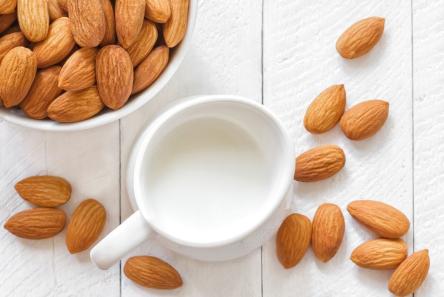 Pistachios: Pistachios are high in fiber, protein, and healthy fats. They are also a good source of potassium and vitamin B6, which are essential for heart health and energy production. Cashews: Cashews are packed with minerals like copper, magnesium, and phosphorus. They are lower in fat compared to other nuts but still provide a good amount of protein and healthy fats. Hazelnuts: Hazelnuts are a good source of vitamin E, manganese, and copper. They also contain high levels of antioxidants, such as proanthocyanidins, which help protect against cell damage. Brazil Nuts: Brazil nuts are one of the best sources of selenium, a mineral that plays a crucial role in thyroid function and antioxidant defense. They also provide healthy fats and protein. Macadamia Nuts: Macadamia nuts are rich in monounsaturated fats, particularly oleic acid, which is beneficial for heart health. They are also a good source of thiamine and manganese. Pecans: Pecans are high in antioxidants, such as ellagic acid and vitamin E. They also contain minerals like zinc and magnesium, as well as fiber and healthy fats. How to Incorporate Nuts into Your Diet There are countless ways to incorporate nuts into your diet to reap their health benefits and enjoy their delicious flavors. Here are some tips on how to make nuts a regular part of your meals and snacks: – Add a handful of mixed nuts to your morning oatmeal or yogurt for a satisfying and nutrient-dense breakfast.
Pistachios: Pistachios are high in fiber, protein, and healthy fats. They are also a good source of potassium and vitamin B6, which are essential for heart health and energy production. Cashews: Cashews are packed with minerals like copper, magnesium, and phosphorus. They are lower in fat compared to other nuts but still provide a good amount of protein and healthy fats. Hazelnuts: Hazelnuts are a good source of vitamin E, manganese, and copper. They also contain high levels of antioxidants, such as proanthocyanidins, which help protect against cell damage. Brazil Nuts: Brazil nuts are one of the best sources of selenium, a mineral that plays a crucial role in thyroid function and antioxidant defense. They also provide healthy fats and protein. Macadamia Nuts: Macadamia nuts are rich in monounsaturated fats, particularly oleic acid, which is beneficial for heart health. They are also a good source of thiamine and manganese. Pecans: Pecans are high in antioxidants, such as ellagic acid and vitamin E. They also contain minerals like zinc and magnesium, as well as fiber and healthy fats. How to Incorporate Nuts into Your Diet There are countless ways to incorporate nuts into your diet to reap their health benefits and enjoy their delicious flavors. Here are some tips on how to make nuts a regular part of your meals and snacks: – Add a handful of mixed nuts to your morning oatmeal or yogurt for a satisfying and nutrient-dense breakfast.
…
– Use crushed nuts as a crunchy coating for baked chicken or fish to add flavor and texture to your main dishes. – Sprinkle chopped nuts on top of salads, soups, and stir-fries for an extra boost of protein and healthy fats. – Mix nuts into homemade granola or trail mix for a convenient and delicious on-the-go snack. – Experiment with making your own nut milk or nut butter at home using your favorite nuts for a healthier and cost-effective alternative to store-bought options. Conclusion Nuts are truly a superfood, offering a plethora of health benefits, culinary possibilities, and nutritional value. Whether you enjoy them raw, roasted, or ground into butter, incorporating nuts into your diet can have a positive impact on your overall health and well-being. So go ahead, grab a handful of your favorite nuts, and start reaping the countless rewards they have to offer. ### Cooking with Nuts In addition to their health benefits and nutritional value, nuts are a fantastic ingredient to use in cooking. They can add texture, flavor, and richness to a wide variety of dishes, both savory and sweet. Here are some creative ways to cook with nuts: **1. Nut Crusts:** Crushed nuts make a delicious and nutritious crust for proteins like chicken, fish, or tofu. Simply coat your protein with a mixture of crushed nuts, herbs, and spices, then bake or pan-fry for a crunchy and flavorful dish. **2. Nut Toppings:** Toasted nuts make a wonderful topping for salads, soups, and grain bowls.

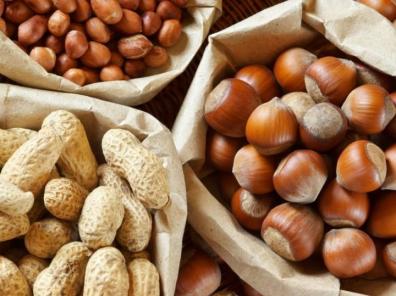
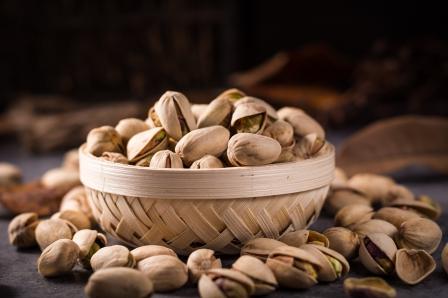
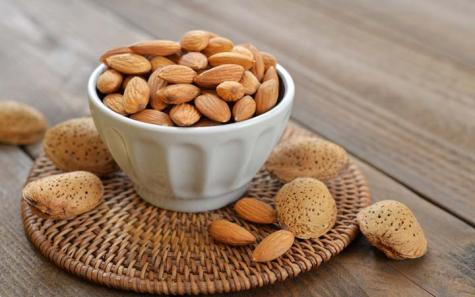
Your comment submitted.